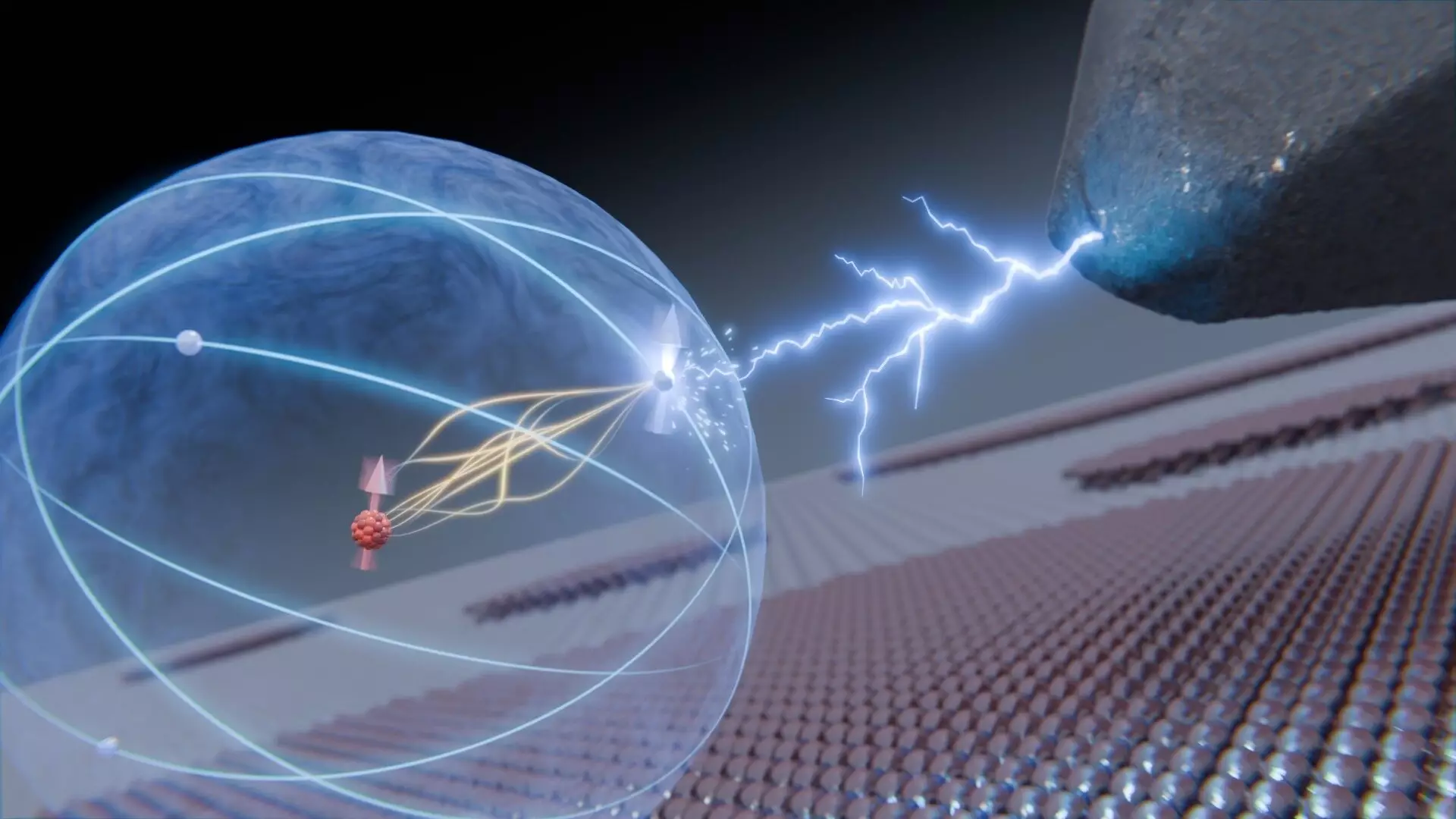Recent advancements at Delft University of Technology shed light on a pioneering approach to manipulating atomic components, providing insight into the fabric of quantum mechanics. Led by renowned physicist Sander Otte, the research focuses on the peculiar behavior of a titanium atom—specifically the isotope Ti-47, which exhibits a unique magnetic characteristic. This study reveals the potential for controlled movement within the atomic nucleus, a discovery that could lead to new horizons in quantum information storage.
The atomic nucleus, often perceived as a static entity within a sea of electrons, is now understood to possess a degree of dynamism. In Ti-47, the nucleus can be influenced, albeit subtly, by the behavior of one of its outer electrons. This interaction is facilitated through a phenomenon known as hyperfine interaction, which has proven to be a challenge in experimental physics due to its minimal strength and the highly specific conditions it demands. The research team fine-tuned their apparatus to manipulate the electron spin, triggering a short-lived synchrony between the spins of the electron and the atomic nucleus.
Quantum spin is fundamental to the principles of quantum computing. In this context, the nuclear spin acts like a delicate compass needle, capable of storing quantum information through its orientation. By utilizing a carefully calibrated magnetic field, Otte’s team has demonstrated a method to push the coupled spins out of equilibrium, resulting in observable fluctuations that align with predictions made by physicist Erwin Schrödinger. This level of experimentation not only validates established theories but also provides a tangible approach to harnessing quantum states.
The ramifications of this research extend beyond theoretical implications; they suggest a path toward practical applications in quantum computing. With the nuclear spin preserved from external disturbances, it presents a more robust avenue for storing quantum data compared to traditional methods that rely on electron spin. As Otte notes, the overarching goal is to exert human influence over matter on an atomic scale, a feat that would revolutionize our understanding of physics and technology alike.
It is essential to recognize that the motivations behind this research extend beyond the pursuit of immediate practical applications. The core drive lies in unveiling the mysteries of atomic behavior and exploring the fundamental principles that govern the universe. As the team led by Otte and Ph.D. graduate Lukas Veldman continues to decipher these interactions, their work exemplifies a commitment to scientific discovery and innovation. This groundbreaking research not only deepens our understanding of quantum mechanics but sets the stage for potentially transformative advancements in quantum technology in the years to come.


Leave a Reply